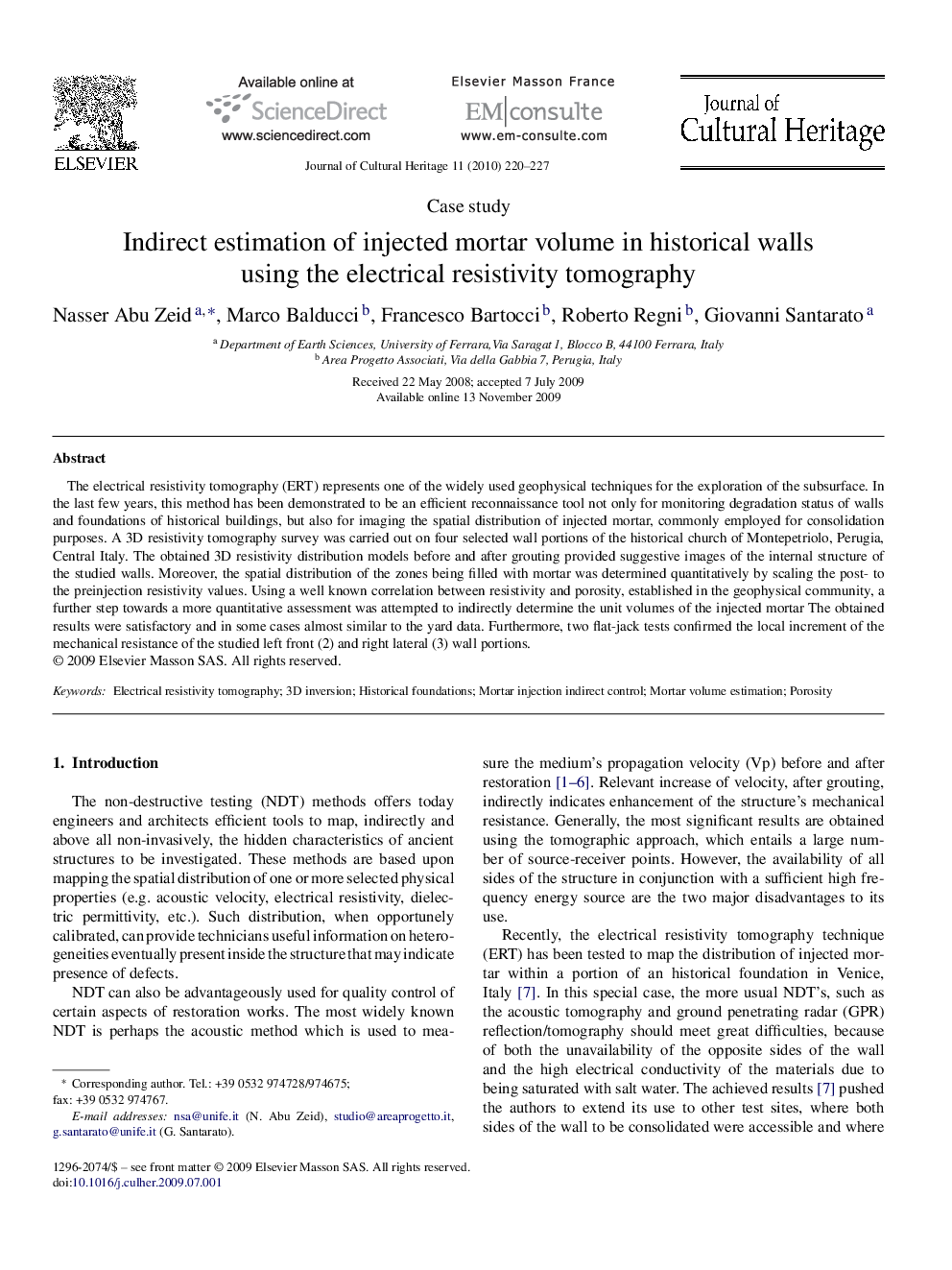| Article ID | Journal | Published Year | Pages | File Type |
|---|---|---|---|---|
| 1038140 | Journal of Cultural Heritage | 2010 | 8 Pages |
The electrical resistivity tomography (ERT) represents one of the widely used geophysical techniques for the exploration of the subsurface. In the last few years, this method has been demonstrated to be an efficient reconnaissance tool not only for monitoring degradation status of walls and foundations of historical buildings, but also for imaging the spatial distribution of injected mortar, commonly employed for consolidation purposes. A 3D resistivity tomography survey was carried out on four selected wall portions of the historical church of Montepetriolo, Perugia, Central Italy. The obtained 3D resistivity distribution models before and after grouting provided suggestive images of the internal structure of the studied walls. Moreover, the spatial distribution of the zones being filled with mortar was determined quantitatively by scaling the post- to the preinjection resistivity values. Using a well known correlation between resistivity and porosity, established in the geophysical community, a further step towards a more quantitative assessment was attempted to indirectly determine the unit volumes of the injected mortar The obtained results were satisfactory and in some cases almost similar to the yard data. Furthermore, two flat-jack tests confirmed the local increment of the mechanical resistance of the studied left front (2) and right lateral (3) wall portions.
